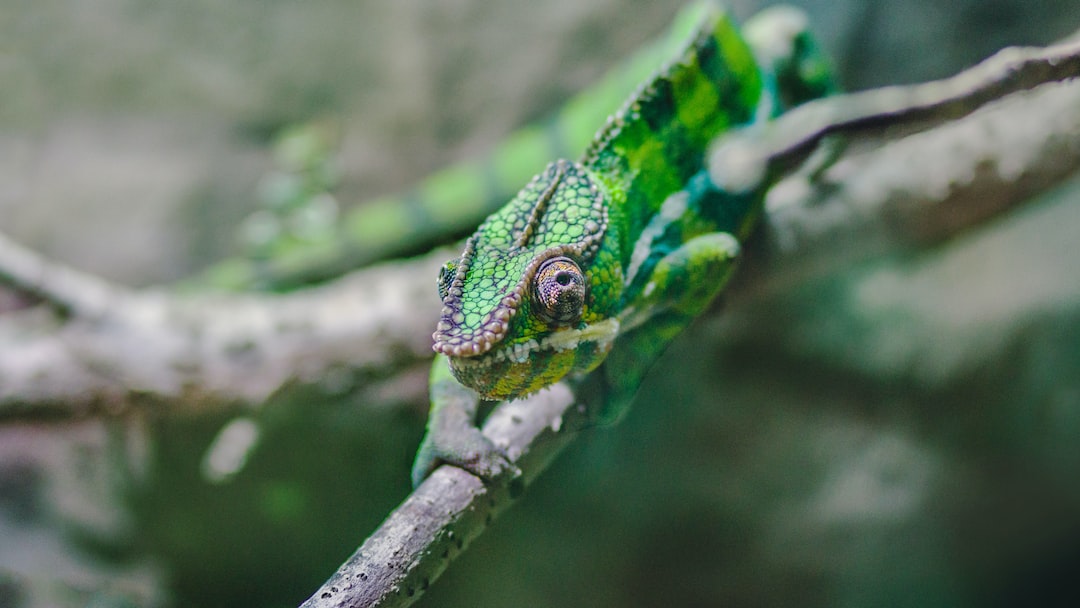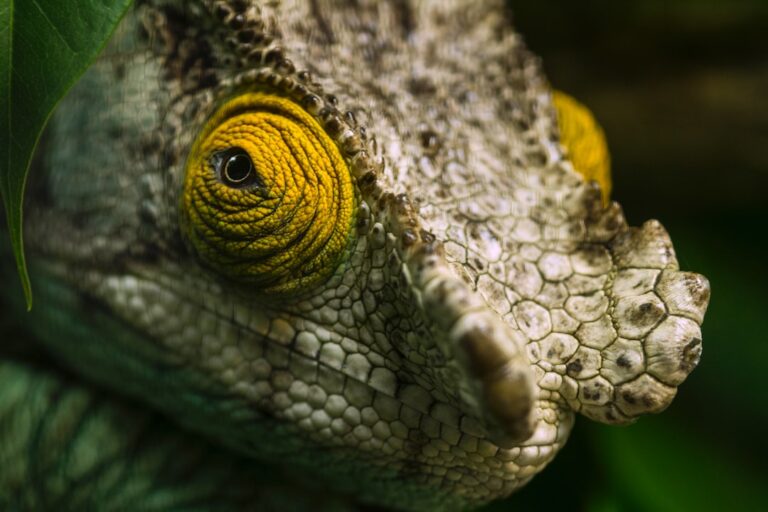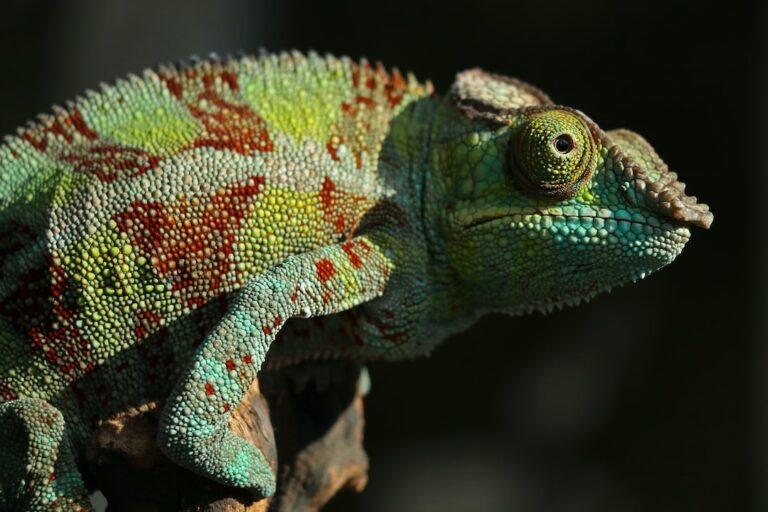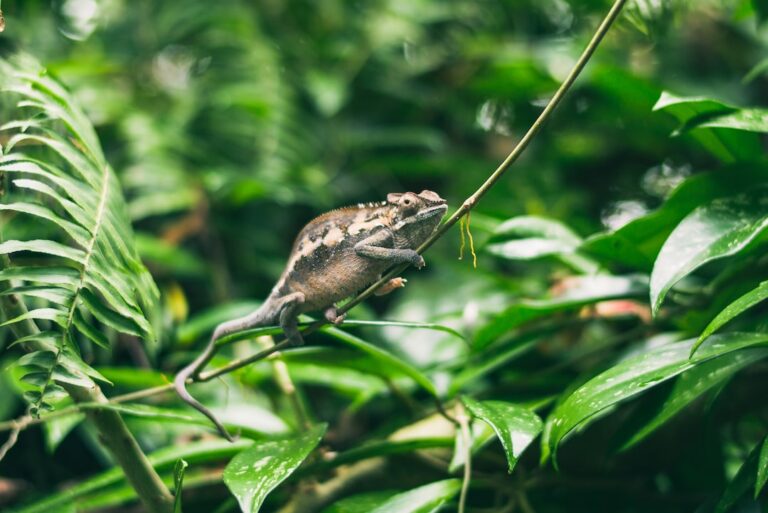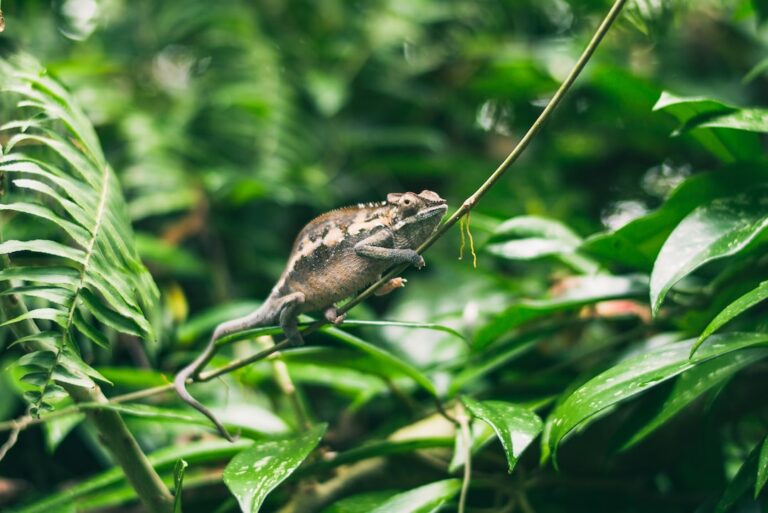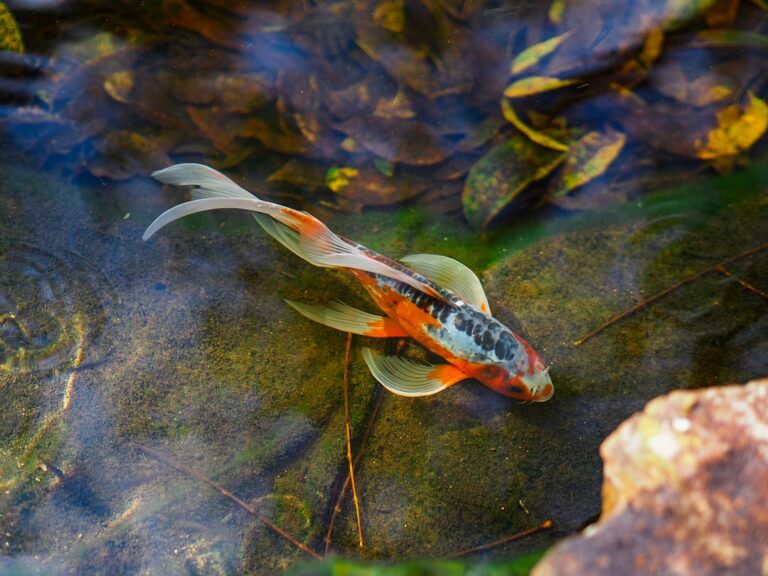Top 6 Mistakes Chameleon Owners Make
Thinking of Owning a Chameleon or Already Have One?
The chameleon is one of the most fantastically-bizarre of all lizards, which definitely explains their popularity in private collections. Their very nature has led to a lot of pet fanatics wanting to add chameleons to their collection.
While that is not necessarily a bad thing, many of these people underestimate the work that goes into owning a pet chameleon and this results in most pet chameleons dying within the first week of purchase. To help you avoid this, I’ve put together a list of the top 6 mistakes that pet chameleon owners tend to make.
1. Not being home enough.
Chameleons require careful observation (as you’re going to learn) but you must also be there to turn their light on/off and to mist them. That means you will not be able to stay away from your home for longer than 12 hours. Of course, there are some exceptions like using automatic lighting and watering systems. However, even with these systems in place you will still need to plan on not being away for long.
I have heard of chameleon owners setting up these systems and then leave for a whole weekend. What would happen if a timer malfunctions? If you really want to own a chameleon, then you must be prepared for the responsibility.
2. Putting two chameleons close to each other.
Chameleons are very territorial and hate company, including humans and other chameleons. Even members of the opposite sex will fight each other over territory. This is important to know for two reasons:
2a. You must never put two chameleons in the same habitat nor close enough where they can see each other. The only exception is if you are breeding two of your chameleons. Please note that in this case, females require special care and you need to be aware of several factors if you want to breed your chameleons. See the “Chameleon Care Guide” for a detailed explanation of all you need to know about this.
2b. You must make sure that your chameleon’s habitat is not in a place where another pet can see it.
3. Handling the chameleon.
Chameleons do not really like to be handled so it’s best to only observe them. There are a few exceptions to this rule of course, however, unnecessary handling will stress out the chameleon and shorten its life. Before you touch your chameleon, make sure you are aware of the correct technique of handling it.
4. Not realizing when the chameleon is stressed.
Now comes one of the most misunderstood (and important) concepts about chameleon ownership. They move slowly and will instinctively stop when frightened. This makes them easy to grab and they will remain in place when putting them on a shoulder or arm. So chameleons always appear content.
It’s easy to see why owners misinterpret this lack of protest as a sign that everything’s okay. Furthermore, they even believe that the chameleon loves it. In most cases, it does not like this at all. It wants to be left alone. When being handled (especially if the correct technique is not followed), a chameleon will often experience a great deal of stress that has a negative impact on its health.
A chameleon’s camouflage is natural to it so the lizard’s instincts inherently cause it to remain still when experiencing stress. This makes it difficult to notice when something’s wrong.
5. Not providing a high variety diet.
A chameleon cannot thrive on a diet that is made up on only two to three different insects. I doesn’t matter if you powder these insects with supplements and ensure they are rich in nutrients.
Chameleons love a variety of insects and there is absolutely no reason to limit a chameleon to a mere three different insects.
So if you are looking to become an owner of this fantastic lizard, then you must be prepared to feed it a variety of different insects. You will also need to ensure that these insects receive the proper diets.
6. Providing an enclosure that is too small.
Even though chameleons might not seem to move around a lot, they still require a large habitat to thrive in. They need places to hide so if you just throw a chameleon into an aquarium with a couple of twigs, it will become very stressed. The habitat must have plenty of greenery and a lot of twigs to climb on. The best option is to build the habitat yourself by using a fish aquarium. Provide ventilation, heavy plant cover, and at least one basking area. You must also ensure that all reachable areas are at least 12 inches from the basking lamp. In the “Chameleon Care Guide”, you can find an explanation of all the factors that you need to consider when constructing your chameleon’s enclosure.
If you are thinking about getting a chameleon.
- Are you able to spot 12 signs that indicate a chameleon is not healthy?
- Do you know the absolute best place to get a chameleon – and, what you MUST KNOW about chameleons found in the wild?
- What are the 10 things to consider before you get a pet chameleon?
- …and the number one cause of death of chameleons in captivity and how to avoid it?
The answers to all these questions can be found in the following book.
Or maybe you already own a chameleon.
- Are you aware of the 13 conditions that are required to have a healthy pet chameleon?
- Do you know how to maintain the proper temperature and humidity for your chameleon, and the best substrate to use?
- How much should you be feeding your chameleon – and what you should never feed it?
- What about the one object you should never have near your chameleon?
In the Chameleon Care Guide, you’ll find an answer to all the questions above, and some more as well.
- What “Gut Loading” is and how to do it, and why it is important.
- How to set up an efficient watering system and ensure your chameleon stays hydrated.
- How to bond with your chameleons, and how to handle them properly and safely.
- The secret to breeding chameleons.
- How to identify, treat, and prevent medical conditions, including metabolic bone disease, mouthrot (stomatitis), and egg retention.

